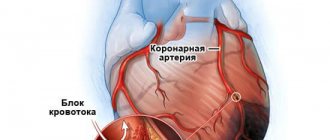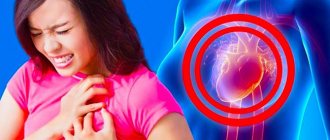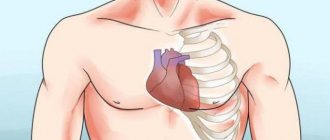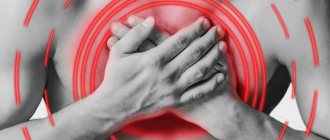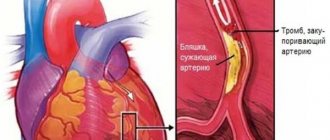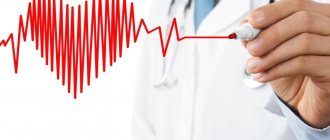Many people quite often complain of pain in the heart and numbness in the arm, and these symptoms appear simultaneously. This negatively affects the overall health, as a person begins to worry about the disease. Such symptoms do not always indicate a cardiac disorder. In order to make a diagnosis with high accuracy, it is recommended to seek qualified medical help.
Most often, pain of this nature appears when there are problems with blood flow. In most cases, this happens during heavy physical exertion and emotional stress. Some patients experience significant worsening of symptoms and require emergency care. If the nature of the pain is identified in a timely manner, complications can be prevented. If a person feels nauseous, his heart hurts and his left arm goes numb, there can be many reasons.
Angina pectoris
With angina, discomfort appears behind the chest, most often during physical exertion or severe stress. Pain sensations move to the left side of the body, that is, the arm, neck and even jaw. The patient feels a pinched heart. There is also pain in the heart area and my left arm and leg are numb. If the symptoms begin to intensify, then panic fear of death appears. Angina pectoris lasts no more than 10 minutes, so it should not be confused with other diseases. To alleviate the condition, it is recommended to take Nitroglycerin and calm down. If these recommendations are followed, the attack goes away without medical attention. As a preventative measure, preference should be given to medications that help strengthen and restore the body’s core muscles.
Numbness of the left hand during pregnancy
Numbness of the left hand during pregnancy is often associated with osteochondrosis and other spinal injuries. Nowadays there is a tendency towards rejuvenation of diseases, i.e. Diseases that only affected older people a few decades ago are now increasingly being diagnosed in young people.
Pregnancy is the period when all chronic diseases begin to worsen, and hidden ones begin to manifest themselves.
Often, a vertebral hernia leads to a woman’s arm becoming numb. Also, overstrain of the cervical spine can cause numbness in the left arm or fingers. Often, a lack of vitamins or minerals causes numbness; in particular, iron deficiency anemia is one of the reasons for hand numbness during pregnancy.
A pregnant woman gains weight every month, while her physical activity decreases, which can cause poor blood circulation and provoke numbness. In addition, the enlarging uterus can compress the nerve endings, which can also cause numbness in the left arm.
There are also many diseases that can cause the left hand to go numb.
In the third trimester, the risk of swelling increases; during this period, many women complain of numbness in their fingers (little finger, ring finger). Often the cause of numbness is a tight wedding ring.
Vascular obstruction
Often, patients have vascular obstruction, so the body does not receive enough nutritional components through the blood. When a spasm occurs, certain parts of the muscle immediately begin to die. Symptoms include a burning sensation, as well as severe pain on the left side. If you take a drug to dilate blood vessels, it will not give the desired effect. In some cases, on the contrary, the signs will only increase. It is important not to hesitate and immediately take measures to hospitalize the person.
Signs
Signs make themselves felt already 10 days after the onset of the disease. The patient almost always experiences the following symptoms:
- tingling inside;
- pain syndrome moves to the left side;
- there is a loss of strength and a broken state;
- sweating increases significantly;
- when moving the body, a number of unpleasant sensations appear, causing difficulty breathing;
- temperature rises;
- problems with night sleep begin;
- heart rhythms are intermittent.
It is important to remember that symptoms intensify only at a moment of complete rest. The development of asthenia should be considered as the first signal, but not all patients are ready to immediately see a doctor. Most often, attention is paid to health after about a week. However, during this time the disease progresses to an advanced stage, and now long-term treatment and recovery will be required. Do not forget that the disease manifests itself only at a moment of rest.
Symptoms
If the pericardial sac is in an inflamed state, this indicates the presence of an infectious, fungal or bacterial disease. This also includes problems of an autoimmune nature. This process is characterized by the accumulation of fluid between the surfaces of the pericardium. As a result, a “motor” tamponade is formed. The organ can no longer contract in the same rhythm, so signs of heart failure occur. These include:
If the patient does have pericarditis, the doctor can easily determine it due to the distinct noise. It appears as a result of friction of the pericardial walls.
The exact causes of cardiomyopathy have not yet been established. Typically, this diagnosis is made to those patients who do not have a congenital malformation or valve defect. If a disorder begins in the myocardium, this will lead to disturbances in the functioning of the heart. The patient often feels tingling and aching pain, as well as numbness on the left side of the body and sleep disturbances.
Stroke is usually understood as changes in the functioning of the brain, which are closely related to insufficient blood flow to its individual areas. Quite often this condition occurs when:
Impaired body functionality depends on the affected area.
If we talk about general symptoms, here are:
Preventing numbness in the left hand
To prevent diseases that cause numbness in the left hand, you should give up bad habits (smoking, drinking alcohol), lead an active and healthy lifestyle, and adhere to a healthy diet.
Poor nutrition, lifestyle, and bad habits lead to the formation of cholesterol and clogging of blood vessels.
It is also recommended to take regular breaks from work (especially when performing strenuous monotonous work with your hands), stretch your hands, try not to overcool and avoid excessive stress.
If numbness of the left hand does appear and is not associated with natural causes, it is necessary to consult a specialist, since self-medication in this case (without establishing an accurate diagnosis) can lead to serious problems.
Numbness in the left hand is now a fairly common problem among both young and old people. Numbness can be caused by a number of reasons, some of which are quite life-threatening.
Numbness in the hand should alert a person when there is pain (in the arm, left chest, shoulder, etc.), weakness, and other symptoms (headaches, dizziness, nausea, etc.).
Portnov Alexey Alexandrovich
Education: Kiev National Medical University. A.A. Bogomolets, specialty - "General Medicine"
How to diagnose a stroke?
When a person suspects a stroke, it is recommended to ask:
If characteristic signs are detected, you should immediately call an ambulance. With a large loss of time, serious complications can develop. In some cases, a person becomes permanently disabled.
Neuralgia
Pain in the heart and numbness in the arm do not always indicate problems with this organ. There are also other reasons that provoke the appearance of such ailments.
First of all, we need to highlight neuralgia. This disease affects the peripheral nervous system. Most pain is observed with intercostal pathology. A burning sensation appears in the chest, and shooting pain appears in the shoulder girdle. Strengthening occurs after raising the hands, and no heart pills can alleviate the patient’s condition.
The disease develops in the presence of appropriate factors.
- The man suffered severe hypothermia.
- Strong physical labor is performed.
- You have previously had an infectious or viral disease.
- When the intervertebral disc and cartilage are damaged, metabolic processes and the functioning of the circulatory system significantly deteriorate. At the very beginning, the discs lose their initial strength and elasticity, and over time they simply dry out. The height will gradually decrease. If a person continues to engage in vigorous physical activity, this will lead to deformation of the fibrous ring or rupture. As a result, an intervertebral hernia may appear, which provokes:
Osteochondrosis manifests itself most in the evening hours.
Serious pathologies in the body as a cause of numbness
By and large, heart pain is one of the most common (along with headaches) painful sensations in modern people. Sometimes it indicates an urgent condition of the patient, requiring immediate intensive measures, which is why it is so important to understand its nature. Pain radiating to the left arm occurs with all cardiac diseases.
IHD is one of the most common factors causing pain in the left arm and heart at the same time. The term IHD, in accordance with the generally accepted WHO classification (ICD), combines several diseases differentiated by the nature and degree of heart damage. The most common of these are angina pectoris and myocardial infarction.
- Painful sensations during angina pectoris are usually provoked by physical exertion or stressful conditions in people with increased reactivity of the nervous system.
- A characteristic feature of angina pain is its irradiation to the left arm, shoulder, and scapula.
- In addition, the patient's condition is aggravated by a poorly controlled fear of death, aggravated by increased pain.
How does coronary heart disease develop?
Myocardial infarction
An angina attack lasting more than 30 minutes usually leads to the development of a heart attack. Unlike angina, changes in the heart during a heart attack (that is, necrosis of myocardial cells) are irreversible.
Although the specificity of the painful sensations is similar to angina pectoris - pain in the heart and the left arm goes numb, or the pain simply spreads to the arm. During a heart attack, these manifestations are extremely strong and cannot be relieved by taking Nitroglycerin.
Another factor that provokes pain in the heart and numbness of the left arm may be a cardiac pathology such as myocarditis, or inflammation of the myocardium, leading to impaired excitability, conductivity and contractility of the heart muscle.
The disease is complex, quite difficult to diagnose and has several varieties depending on the etiology. Despite the variety of forms of myocarditis, it is possible to identify common primary symptoms of this disease, which usually appear 7–10 days from the onset of the disease:
- fatigue;
- tachycardia;
- shortness of breath;
- increased sweating;
- febrile fever (increased body temperature to 38–39 degrees);
- asthenic signs (frequent mood swings, constant “weakness”, general malaise, sleep disturbances);
- pain in the chest, often accompanied by pain in the left upper limb.
Most often, it is the signs of asthenia that are the first to indicate the occurrence of problems in the myocardium; the pain syndrome appears a little later and is not associated with an increase in physical activity. Shortness of breath can also occur regardless of physical exertion and is accompanied by palpitations and irregular heart rhythms, which distinguishes myocarditis from other conditions.
Most of the above cardiac conditions can be determined laboratory - by testing the blood for the presence of specific enzymes indicating the development of a heart attack (myoglobin, cardiac troponin, MB - fraction of creatine phosphokinase) or disturbances in the level of ESR (erythrocyte sedimentation rate), AST (aspartate aminotransferase), LDH-1 (lactate dehydrogenase) and the same MB fractions and main proteins in myocarditis.
When pain in the heart radiates to the arm, not necessarily the left, this may also indicate extracardiac causes of the pain syndrome. What can provoke it?
Damage to the peripheral nerves, called neuralgia, can also cause pain in the heart, radiating to the left arm - intercostal neuralgia, which develops against the background of spinal osteochondrosis.
This disease most often affects people 40–60 years old; it manifests itself as severe, burning and extremely painful pain in the chest, which is not relieved by heart medications. Neither ECG nor blood tests reveal any cardiac pathologies, and body temperature remains normal. Intercostal neuralgia (mistakenly called cardiac neuralgia) can be provoked by:
- hypothermia;
- excessive physical activity;
- infection or intoxication (for example, drug);
- compression of intervertebral discs as a result of age-related diseases;
- complication of a viral infection (for example, herpes zoster).
Osteochondrosis
The intercostal neuralgia described above is a clinical manifestation of osteochondrosis, often causing pain in the heart, which radiates to the left arm. This type of pain is characteristic of osteochondrosis of the cervicothoracic region and manifests itself as a dull, aching pain, often encircling, voluminous, spreading.
It is almost impossible to confirm or exclude the presence of osteochondrosis solely based on the symptomatic picture. For an accurate diagnosis you need:
- X-ray examination;
- CT scan;
- magnetic resonance imaging of the spine.
Patients who are careless about their health cause a lot of trouble for doctors. After all, they often fall into the hands of doctors when it is too late or too problematic to treat an advanced disease.
But there is another category of patients who also cannot be called a gift for doctors. These are people who show excessive attention to their well-being and listen to almost every heartbeat.
The fear of heart attack and death in such patients leads to the fact that they develop a real phobia, called cardiosenestopathic or cardiophobic syndrome.
Patients often complain that their pain in the heart radiates to the left arm, although in fact it may turn out that their cardialgia is purely psychogenic in nature. For example, by showing excessive interest in medical literature, such patients “discover” symptoms of angina pectoris, pre-infarction conditions and other disorders.
But this can only turn out to be self-hypnosis, due to which real anxiety, anxiety and fear of death have developed. The cause of psychogenic cardialgia is most often prolonged stress, disorders of the central nervous system, and emotional fatigue.
Typically, this type of pain appears when there are problems with blood flow. It occurs especially often after physical or emotional stress. Sometimes the symptom worsens and emergency medical attention is required. Therefore, it is important to understand its character in order to prevent the development of complications.
Angina is a disease characterized by discomfort in the chest. Occurs after physical exertion or emotional stress. The pain radiates to the left arm, part of the neck and jaw.
To prevent this situation, doctors recommend taking medications that strengthen and restore the main muscle.
Myocardial infarction. The disease occurs against the background of obstruction of the lumen of the vessel, which causes a sharp deficiency of nutrients that enter the heart with blood. This spasm causes the death of certain areas of the heart muscle.
The person feels a burning sensation, severe pain in the chest, and the left side of the body suffers. The manifestations of the disease are not controlled by vasodilators, and the symptoms increase. The patient must be urgently hospitalized for medical care.
Silent myocarditis
One of the causes of chest pain is inflammation of the heart muscle. Pathology stimulates a violation of its excitability, conductivity and contractility. Typical signs are observed 10 days after the onset of the disease.
The patient complains of sensations such as:
- It aches and hurts inside.
- The pain radiates to the left side of the shoulder girdle, pulling.
- Severe weakness, weakness.
- Increased sweating.
- During body movement, unpleasant sensations intensify, making breathing difficult.
- Sometimes body temperature changes.
- Night sleep is disturbed.
- There are interruptions in the heart rhythm.
The first signal of the onset of changes is asthenia. The patient most often does not pay attention to this and only on the 7th day, when typical signs occur, does he consult a doctor. Unfortunately, during this time the disease enters a severe stage; the patient requires long-term treatment and rehabilitation.
The causes of inflammation of the pericardial sac are considered to be numerous past infectious, bacterial, fungal, and autoimmune diseases. During this process, fluid collects between the walls of the pericardium, which leads to the development of motor tamponade.
Symptoms:
- Breathing becomes difficult.
- The skin becomes pale.
- Dizziness.
- The hand is taken away from the side of the heart.
- Dry cough.
- The lower extremities of the body swell.
- Intense thirst.
- Arrhythmia.
- Possible loss of consciousness.
In case of pericarditis, during auscultation, the doctor will determine a typical noise - pericardial friction.
This disease has no specific causes. Presumably, the basis for the diagnosis of “cardiomyopathy” is the absence of congenital developmental anomalies, valvular heart defects, changes in blood vessels, and arterial hypertension.
Disorders occur in the myocardium, which contribute to the development of cardiac dysfunction. The patient constantly tingles and aches in the chest, the left side of the body is taken away, weakness and sleep disturbance are observed.
A sudden shortage of blood supply to a certain area of the brain, as a result of which the functionality of the organ changes, is called a stroke.
- Due to the proliferation of cartilage tissue.
- Due to a hernia in the intervertebral discs.
- Due to muscle spasm.
- Due to degenerative changes in the spine.
Cardialgia
Cardialgia is characterized by a recurring or constant nature. True, painful sensations arise not due to damage to any organ, but due to the work of the patient’s subconscious. Strong experiences and feelings of fear can create many unpleasant symptoms. This health problem is called a panic attack, that is, a person is afraid of death due to cardiac arrest. The attacks last for a couple of minutes, but sometimes last for several hours. Symptoms include high blood pressure, a feeling of heaviness, heart pain and numbness in the left arm. After drinking alcohol, these symptoms become more pronounced. Sometimes a person shows a specific place that provokes the development of such signs. No heart medication can eliminate discomfort.
What should I do if my heart hurts and my left arm goes numb?
If pain occurs in the area of the heart and, along with this, numbness of the left side begins, then the current situation should not be ignored. It is better to consult a specialist, and this should be done even with minor symptoms. This will help prevent the development of complications and begin treatment in a timely manner. Under no circumstances should you self-medicate; only after an examination, the doctor will select the appropriate course. In any case, it is better to prevent a disease than to treat it.
What to do if there is pain in the heart if it radiates to the left hand?
If pain in the heart radiates to the left arm, the main thing you should not do is self-diagnosis. Only a specialist can determine the true cause of pain, based on the patient’s medical history, clinical picture and research results. Therefore, you should learn to determine the localization of your pain, its irradiation (spread to other parts of the body), and additional symptoms in order to be able to accurately tell the doctor about them.
Precise definitions given in response to the doctor’s questions will allow him to form a more or less clear picture of the pathology and make a diagnosis. A correct diagnosis is the key to successful therapy.

